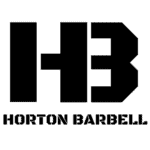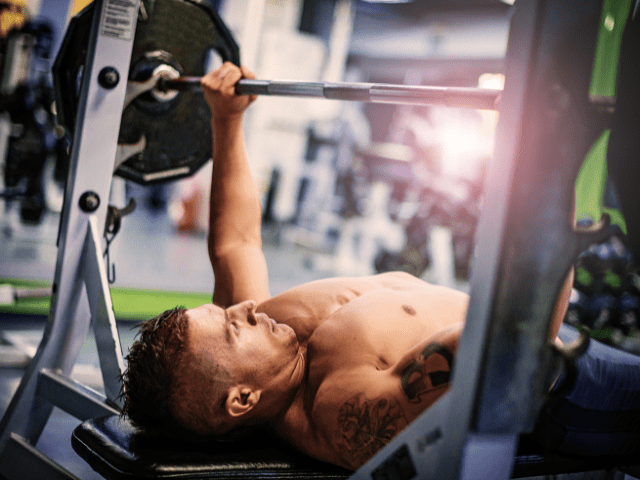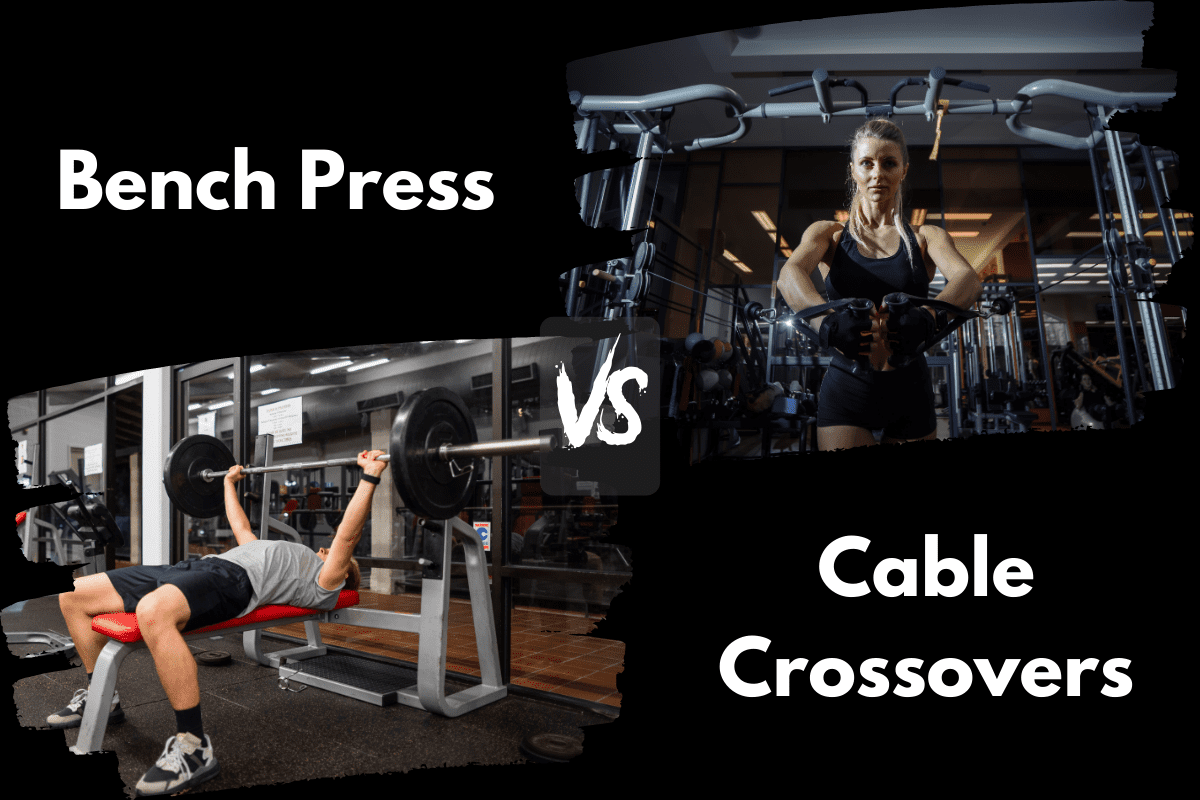Cable Crossover vs Bench Press (Which is Best For Strength?)
In this article, we will be comparing Cable Crossovers and Bench Press.
Both of these exercises are commonly used to target the chest and can be incorporated into various workout routines. However, they each have their own unique advantages and disadvantages, and it is important to understand the differences between them in order to determine the best exercise for your goals.
We will delve into the mechanics of both Cable Crossovers and Bench Press, as well as their respective pros and cons, to help you choose the right exercise for you.
Cable Crossovers

Equipment Needed
- Cable Machine
Muscles Worked
- Chest (Pectoralis Major, Pectoralis Minor)
How To
- Place single-handle attachments on both sides of a cable crossover machine.
- Stand with feet shoulder-width apart and a slight forward lean through the torso.
- Hold handles with your arms spread and a slight bend in the elbow.
- Press the cables forward until your hands touch. (crossing the arms in the front will add more emphasis to the upper pectorals)
- Slowly bring the hands back to the starting position and repeat.
Coaching Points
Make sure both pins on each side of your machine are on the same notch.
If you’re simply looking for Cable Crossover alternatives, check out my 10 favorite Cable Crossover alternatives for chest day.
Benefits of Cable Crossovers
Some potential benefits of incorporating Cable Crossovers into a workout routine include:
- Targeted muscle activation: Cable crossovers allow you to focus on specific areas of the chest, such as the upper, middle, or lower chest. This can help to develop muscle balance and symmetry.
- Greater range of motion: Cable crossovers allow for a greater range of motion than traditional bench press exercises, which can help to improve flexibility and mobility in the shoulders and chest.
- Variety in workouts: Cable crossovers can be a great way to add some variety to your pressing workouts to keep your program from getting stale.

Tired of coming up with your own workouts? But don’t want to pay an arm and a leg?
I post workouts 5 days a week right here. (Did I mention they’re free?)
Bench Press

Equipment Needed
- Multi-purpose lifting rack
- Bench
- Barbell
- Bumper or Iron plates
Muscles Worked
- Chest
- Shoulders
- Triceps
- Biceps (Isometric and eccentric contributors)
Step-by-Step Instructions
- Set the height of the barbell so that when you unrack the barbell, you are only doing a very short upward concentric movement.
- Lie flat on your back on the bench.
- Keep your feet flat on the floor. (Some do find it comfortable to pull the feet back toward their butt as they arch).
- Keep your butt on the bench.
- Pull your shoulder blades together and keep the back of your head on the bench. You will slightly arch your back. Keep your core tight and keep the shoulder blades pulled back tight.
- Take a thumbs-width grip from the knurling and completely close your grip. Keep your knuckles pointing toward the ceiling and squeeze the barbell.
- Later in this article, I will go over other popular grips and why they are used.
- Unrack the weight and take a deep breath.
- Control the barbell down during the eccentric movement and draw the barbell in, keeping the elbows at about a 45-degree angle away from the torso.
- The barbell will make contact with your torso right at the nipple line on the chest.
- Once contact is made, drive the barbell back up to the starting position.
Coaching Points
By far the most common mistake with bench pressing (and almost all compound movements) is improper form. Because the lift is very technical, uses the whole body, and requires patience and persistence, lifters can have incorrect form, go up in weight too quickly, and potentially injure themselves.
Remember why you are bench pressing. Goals matter. Make sure you are consulting with a coach or credible internet source so that you are engaging in beneficial bench press training for your future health and athletic success.
Common Mistakes
- Do not overarch the back or let your butt come off the bench. Most professionals will not accept repetitions if the butt comes off the bench but also you will likely injure yourself with poor form.
- Do not let the back of your head come off the bench because you are pulling down on your neck to watch the bar hit your chest. You will get used to the movement and your peripheral vision will allow you to know when the bar makes contact.
- Do not let the elbows flare out away from the midline. The shoulders are incredibly vulnerable in these positions and the sheer force placed on the shoulders will lead to injury if the technique is not made a priority.
Bench Press Benefits
Some of the benefits of the Bench Press include:
- Improved upper body strength: The bench press is an effective way to build strength in the chest, triceps, and shoulders. By lifting progressively heavier weights, you can continuously challenge these muscle groups and see improvements in your strength and muscle size over time.
- Improved athletic performance: The Bench Press is a compound exercise that involves multiple joints and muscle groups. As a result, it can help to improve overall upper body strength and power, which can be beneficial for athletes in sports that require upper body strength and explosiveness, such as football or basketball.
- Increased bone density: Resistance training exercises like the Bench Press can help to increase bone density, which can be particularly beneficial for women as they age and their risk for osteoporosis increases.
Cable Crossovers vs Bench Press: Which is Better?
Now, let’s take a close look at both exercises side-by-side to see which is better for common lifting goals.
Better For Building Size and Strength: Bench Press
This one really isn’t even close.
The Bench Press also allows for the use of heavier weights, which can provide a greater stimulus for muscle growth and strength gains.
It’s also a compound exercise, meaning it works multiple muscle groups at once. Cable Crossovers, on the other hand, are more of an isolation exercise that focuses almost completely on the chest.
Compound exercises are almost always going to be much more effective than isolation exercises at developing strength.
Better For Beginners: Bench Press
Think of Cable Crossovers as icing on the cake. Yes, frosting is delicious, but it’s only a small part of the cake as a whole. A little ‘extra’ that can make it taste even better.
However, Bench Press is the cake. It’s the main component that everything else is built around. You can always add icing or sprinkles or even fruit, but the cake is still going to be the foundation of the dessert that makes it all work.
So, as a beginner starting out, make sure to incorporate plenty of Bench Press to build your foundation of strength. Then, add in some Cable Crossovers here and there to add some variety to your chest workouts. Then, go eat some cake.

Get Shredded… For Free
Get a free workout Monday through Friday, posted right here on Horton Barbell. These workouts are designed to help you get strong, in shape and look great at the beach!
Final Thoughts
I’ve just spent the last section of this article comparing which is better – Cable Crossovers vs Bench Press. The truth is, there is no reason (assuming you have the available equipment) you shouldn’t have both exercises in your training program.
Both are great exercises for developing upper body strength and hypertrophy. Incorporating both exercises into your training program can also add variety and keep your workouts from getting stale.
So, my suggestion would be instead of trying to decide between the two exercises, figure out how you can utilize both Bench Press and Cable Crossovers in your training plan.
More Links and Info
Check out how Cable Crossovers compare to some other popular chest exercises:

